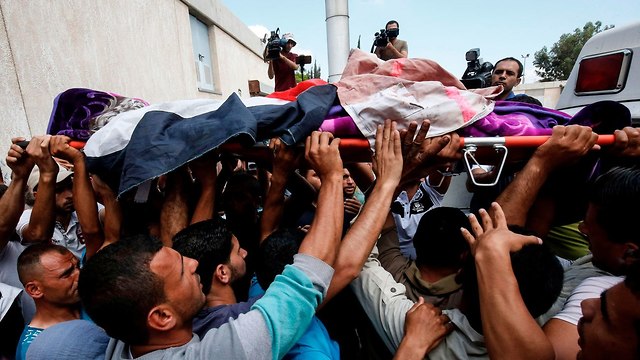
A most unflattering investigation
Opinion: Israel was the focus of a New York Times investigation regarding the death of a young Palestinian medic at the Gaza border, and it was not pretty.
On Sunday, Najjar’s story made the lead on the world’s most important news website. She’s one of several hundred Palestinians killed during the last eight months, since the protests on the border started. But her story was the one that made headlines.
Six researchers, headed by veteran journalist David Halbfinger, conducted the six-month long investigation. They went to Gaza and interviewed Najjar’s colleagues who were at the scene when her death took place. They collected 30 testimonies and more than 1,000 pictures and videos — recreating an image of the scene by marking the location of medics and protesters, and the IDF soldiers across the border. They wanted to figure out whether the soldiers were in danger.
The IDF issued a statement 10 days after the events of June 1, saying that Najjar had been shot accidently. The New York Times’ investigation looks at the smallest of details, raising questions about the IDF handling of the situation, as well as the nature of the rules of engagement along the Gaza border. If Najjar was shot and killed without operational justification, as the Times shows, how many of the hundreds who were killed on the border during the last eight months were also shot without posing a real threat?
As an Israeli journalist I can only envy the thorough work of Halbfinger and his colleagues. Having the time and resources for such investigative work should not be taken for granted. While the Gaza Strip remains closed to Israeli journalists—on the orders of the Israeli security forces — the foreign media is free to enter. Us Israeli journalists have to rely on announcements from the IDF Spokesperson, and have no way of properly cross-referencing information. That isn’t journalism at its best, even though some of us have sources across the border and can ask for comments, or verify some details.
Najjar’s death was lost in the mass of events at the Gaza border this summer. Israeli fields were burning after incendiary balloons set them on fire, and Fridays became a lethal scene of confrontation at the security fence. We Israelis were naive to think the world was no longer interested in the Middle East or what happens on the Gaza border. Last night, for nearly two hours, the world’s most influential and important news site took a break from Donald Trump and the festive season and laid Israeli actions out across its site for all to see. And it wasn't a pretty picture.











